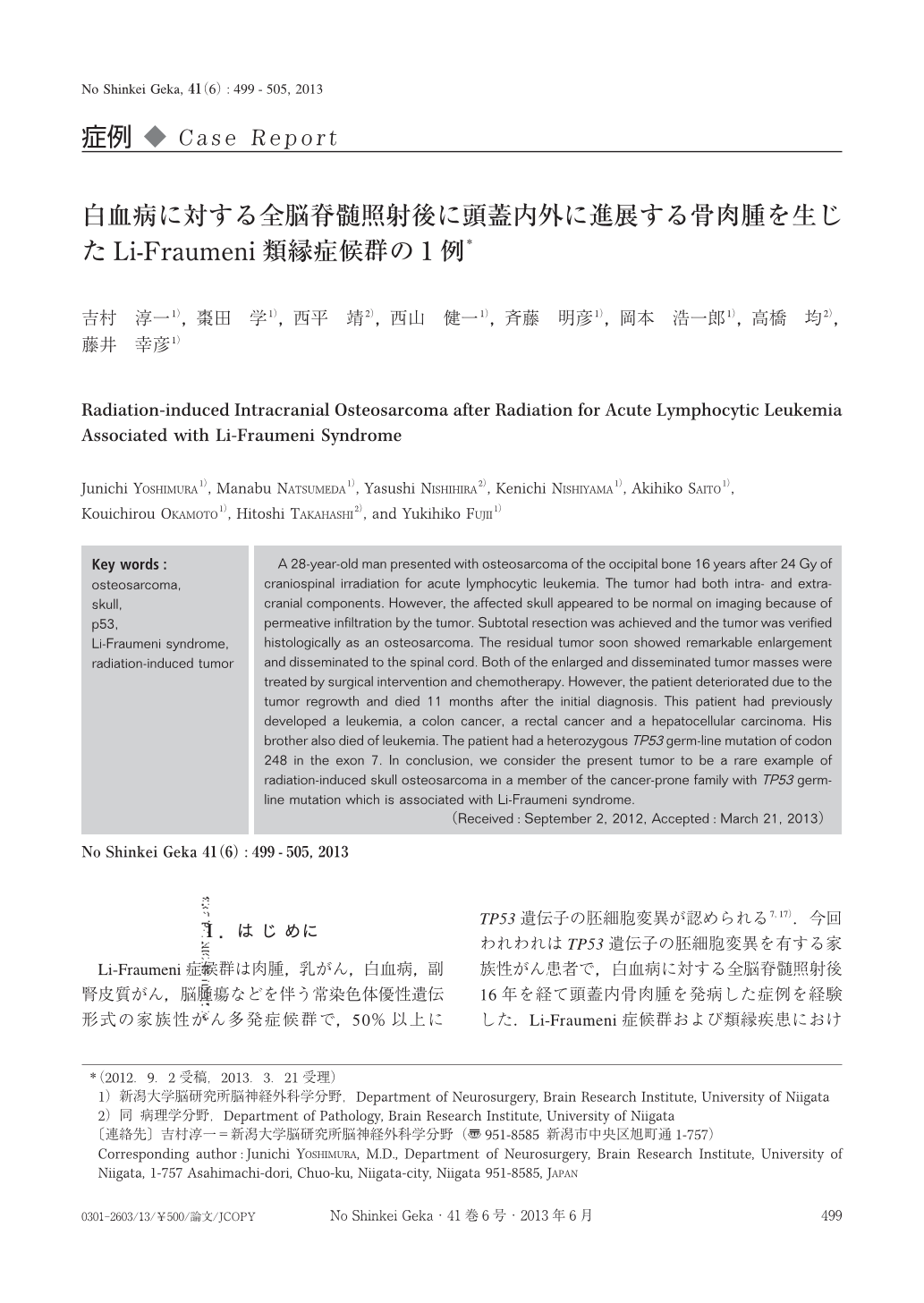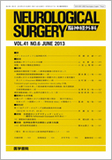Japanese
English
- 有料閲覧
- Abstract 文献概要
- 1ページ目 Look Inside
- 参考文献 Reference
Ⅰ.はじめに
Li-Fraumeni症候群は肉腫,乳がん,白血病,副腎皮質がん,脳腫瘍などを伴う常染色体優性遺伝形式の家族性がん多発症候群で,50%以上にTP53遺伝子の胚細胞変異が認められる7,17).今回われわれはTP53遺伝子の胚細胞変異を有する家族性がん患者で,白血病に対する全脳脊髄照射後16年を経て頭蓋内骨肉腫を発病した症例を経験した.Li-Fraumeni症候群および類縁疾患における頭蓋骨骨肉腫発生例の報告は1例のみであり9),放射線誘発と考えられる頭蓋骨骨肉腫としては最初の例と考えられるので報告する.
A 28-year-old man presented with osteosarcoma of the occipital bone 16 years after 24 Gy of craniospinal irradiation for acute lymphocytic leukemia. The tumor had both intra- and extra-cranial components. However, the affected skull appeared to be normal on imaging because of permeative infiltration by the tumor. Subtotal resection was achieved and the tumor was verified histologically as an osteosarcoma. The residual tumor soon showed remarkable enlargement and disseminated to the spinal cord. Both of the enlarged and disseminated tumor masses were treated by surgical intervention and chemotherapy. However, the patient deteriorated due to the tumor regrowth and died 11 months after the initial diagnosis. This patient had previously developed a leukemia, a colon cancer, a rectal cancer and a hepatocellular carcinoma. His brother also died of leukemia. The patient had a heterozygous TP53 germ-line mutation of codon 248 in the exon 7. In conclusion, we consider the present tumor to be a rare example of radiation-induced skull osteosarcoma in a member of the cancer-prone family with TP53 germ-line mutation which is associated with Li-Fraumeni syndrome.

Copyright © 2013, Igaku-Shoin Ltd. All rights reserved.


